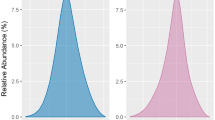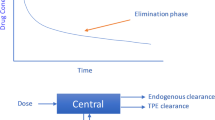Abstract
Target-specific oral anticoagulants (TSOACs) dabigatran, rivaroxaban and apixaban are approved for the prevention and treatment of thromboembolism in several clinical settings. Bleeding is the major complication of anticoagulant therapy, including TSOACs, and anticoagulant reversal strategies are highly desired for the management of anticoagulant-associated major bleeding in addition to maximum supportive care and procedural/surgical intervention. Unlike VKAs for which vitamin K and coagulation factor replacement with prothrombin complex concentrate (PCC) can restore hemostasis, there are no clinically available agents proven to reverse TSOAC anticoagulant effect and ameliorate TSOAC-related major bleeding. This narrative review critically evaluates the evidence for TSOAC reversal using non-specific reversal agents PCC, activated PCC (APCC) and recombinant activated factor VII (rVIIa) which have been assessed primarily using in vitro experiments, animal models and healthy human volunteers. Aripazine is a novel agent undergoing clinical development for non-specific anticoagulant reversal, including TSOACs. Data are presented regarding specific reversal agents idarucizumab (dabigatran) and andexanet alfa (oral factor Xa inhibitors) currently being evaluated in clinical trials. A practical approach to management of patients with TSOAC-associated bleeding is also provided. There is an urgent need for clinical studies that evaluate the efficacy and safety of reversal strategies for TSOAC-related major bleeding with assessment of clinical outcomes such as bleeding and mortality.

Similar content being viewed by others
References
Providencia R, Grove EL, Husted S, Barra S, Boveda S, Morais J (2014) A meta-analysis of phase III randomized controlled trials with novel oral anticoagulants in atrial fibrillation: comparisons between direct thrombin inhibitors vs. factor Xa inhibitors and different dosing regimens. Thromb Res 134(6):1253–1264
Castellucci LA, Cameron C, Le Gal G et al (2014) Clinical and safety outcomes associated with treatment of acute venous thromboembolism: a systematic review and meta-analysis. JAMA 312(11):1122–1135
Larsen TB, Rasmussen LH, Skjoth F et al (2013) Efficacy and safety of dabigatran etexilate and warfarin in “real-world” patients with atrial fibrillation: a prospective nationwide cohort study. J Am Coll Cardiol 61(22):2264–2273
Graham DJ, Reichman ME, Wernecke M et al (2014) Cardiovascular, bleeding, and mortality risks in elderly medicare patients treated with dabigatran or warfarin for non-valvular atrial fibrillation. Circulation. doi:10.1161/CIRCULATIONAHA.114.012061
Cuker A, Siegal DM, Crowther MA, Garcia DA (2014) Laboratory measurement of the anticoagulant activity of the non-vitamin K oral anticoagulants. J Am Coll Cardiol 64(11):1128–1139
Dentali F, Marchesi C, Pierfranceschi MG et al (2011) Safety of prothrombin complex concentrates for rapid anticoagulation reversal of vitamin K antagonists. A meta-analysis. Thromb Haemost 106(3):429–438
Ehrlich HJ, Henzl MJ, Gomperts ED (2002) Safety of factor VIII inhibitor bypass activity (FEIBA): 10-year compilation of thrombotic adverse events. Haemophilia 8(2):83–90
Aledort LM (2004) Comparative thrombotic event incidence after infusion of recombinant factor VIIa versus factor VIII inhibitor bypass activity. J Thromb Haemost 2(10):1700–1708
Eerenberg ES, Kamphuisen PW, Sijpkens MK, Meijers JC, Buller HR, Levi M (2011) Reversal of rivaroxaban and dabigatran by prothrombin complex concentrate: a randomized, placebo-controlled, crossover study in healthy subjects. Circulation 124(14):1573–1579
Levi M, Moore KT, Castillejos CF et al (2014) Comparison of three-factor and four-factor prothrombin complex concentrates regarding reversal of the anticoagulant effects of rivaroxaban in healthy volunteers. J Thromb Haemost 12(9):1428–1436
Zahir H, Brown KS, Vandell A et al (2015) Edoxaban effects on bleeding following punch biopsy and reversal by a 4-factor prothrombin complex concentrate. Circulation 131(1):82–90
Fukuda T, Honda Y, Kamisato C, Morishima Y, Shibano T (2012) Reversal of anticoagulant effects of edoxaban, an oral, direct factor Xa inhibitor, with haemostatic agents. Thromb Haemost 107(2):253–259
Herrmann R, Thom J, Wood A, Phillips M, Muhammad S, Baker R (2014) Thrombin generation using the calibrated automated thrombinoscope to assess reversibility of dabigatran and rivaroxaban. Thromb Haemost 111(5):989–995
Stangier J, Feuring M (2012) Using the HEMOCLOT direct thrombin inhibitor assay to determine plasma concentrations of dabigatran. Blood Coagul Fibrinolysis 23(2):138–143
Dinkelaar J, Molenaar PJ, Ninivaggi M, de Laat B, Brinkman HJ, Leyte A (2013) In vitro assessment, using thrombin generation, of the applicability of prothrombin complex concentrate as an antidote for Rivaroxaban. J Thromb Haemost 11(6):1111–1118
Korber MK, Langer E, Ziemer S, Perzborn E, Gericke C, Heymann C (2014) Measurement and reversal of prophylactic and therapeutic peak levels of rivaroxaban: an in vitro study. Clin Appl Thromb Hemost 20(7):735–740
Perzborn E, Heitmeier S, Laux V, Buchmuller A (2014) Reversal of rivaroxaban-induced anticoagulation with prothrombin complex concentrate, activated prothrombin complex concentrate and recombinant activated factor VII in vitro. Thromb Res 133(4):671–681
van Ryn J, Schurer J, Kink-Eiband M, Clemens A (2014) Reversal of dabigatran-induced bleeding by coagulation factor concentrates in a rat-tail bleeding model and lack of effect on assays of coagulation. Anesthesiology 120(6):1429–1440
Solbeck S, Meyer MA, Johansson PI et al (2014) Monitoring of dabigatran anticoagulation and its reversal in vitro by thrombelastography. Int J Cardiol 176(3):794–799
Key NS, Negrier C (2007) Coagulation factor concentrates: past, present, and future. Lancet 370(9585):439–448
Escolar G, Arellano-Rodrigo E, Lopez-Vilchez I et al (2014) Reversal of rivaroxaban-induced alterations on hemostasis by different coagulation factor concentrates. Circ J [Epub ahead of print]
Chan HHW, Atkinson HM, Goncharenko M, Berry LR, Chan AKC (2011) Reversal of dabigatran using recombinant activated factor VII and activated prothrombin complex concentrates in thromboelastography assay. J Thromb Haemost 9(Suppl 2):576–577
Khoo TL, Weatherburn C, Kershaw G, Reddel CJ, Curnow J, Dunkley S (2013) The use of FEIBA(R) in the correction of coagulation abnormalities induced by dabigatran. Int J Lab Hematol 35(2):222–224
Halim AB, Samama MM, Mendell J (2014) Ex vivo reversal of the anticoagulant effects of edoxaban. Thromb Res 134(4):909–913
Marlu R, Hodaj E, Paris A, Albaladejo P, Crackowski JL, Pernod G (2012) Effect of non-specific reversal agents on anticoagulant activity of dabigatran and rivaroxaban. A randomised crossover ex vivo study in healthy volunteers. Thromb Haemost 108(2):217–224
Ansell JE, Bakhru SH, Laulicht BE et al (2014) Use of PER977 to reverse the anticoagulant effect of edoxaban. N Engl J Med 371(22):2141–2142
Hollenbach S, Lu G, DeGuzman F et al (2014) Abstract 14657: andexanet-alfa and PER977 (Arapazine) correct blood loss in a rabbit liver laceration model-only andexanet reverses markers of fXa-mediated anticoagulation. Circulation 130(Suppl 2):A14657
Lu G, Kotha J, Cardenas JM et al (2014) Abstract 18218: in vitro characterization of andexanet alfa (PRT064445), a specific fxa inhibitor antidote versus aripazine (PER977), a non-specific reversal agent. Circulation 130(Suppl 2):A18218
van Ryn J, Litzenburger T, Gan G, Coble K, Schurer J (2012) In vitro characterization, pharmacokinetics and reversal of supratherapeutic doses of dabigatran-induced bleeding in rats by a specific antibody fragment antidote to dabigatran [abstract]. Blood 120(21):Abstract 3418
Van Ryn J, Litzenburger T, Waterman A et al (2011) Dabigatran anticoagulant activity is neutralized by an antibody selective to dabigatran in in vitro and in vivo models [abstract]. J Am Coll Cardiol 57(14):E1130
Grottke O, Honickel M, van Ryn J, ten Cate H, Spronk H, Rossaint R (2014) Abstract 18544: bloods loss in dabigatran anticoagulated pigs with polytrauma is significantly reduced by early therapy with activated and non-activated prothrombin complex concentrates. Circulation 130(Suppl 2):A18544
Toth J, Gan G, van Ryn J et al (2012) Reversal of dabigatran’s anticoagulant activity in the monkey by a specific antidote and pharmacokinetic and pharmacodynamic modeling. Blood 120(21):Abstract 22
Glund S, Stangier J, Schmohl M et al (2013) Abstract 17765: a specific antidote for dabigatran: immediate, complete and sustained reversal of dabigatran induced anticoagulation in healthy male volunteers. Circulation 128(22 Supplement):A17765
Glund S, Stangier J, Schmohl M et al (2014) Idarucizumab, a specific antidote for dabigatran: immediate, complete and sustained reversal of dabigatran induced anticoagulation in elderly and renally impaired subjects. Blood 124(21):344
Lu G, DeGuzman FR, Hollenbach SJ et al (2013) A specific antidote for reversal of anticoagulation by direct and indirect inhibitors of coagulation factor Xa. Nat Med 19(4):446–451
Crowther M, Levy GG, Lu G et al (2014) A phase 2 randomized, double-blind, placebo-controlled trial demonstrating reversal of edoxaban-induced anticoagulation in healthy subjects by andexanet alfa (PRT064445), a universal antidote for factor Xa (fXa) inhibitors. Blood 124(21):4269
Crowther M, Kitt M, Lorenz T et al (2013) A phase 2 randomized, double-blind, placebo-controlled trial of PRT064445, a novel, universal antidote for direct and indirect factor Xa inhibitors. J Thromb Haemost 11(Suppl 2):30
Crowther M, Levy GG, Lu G et al (2014) ANNEXA-A: A phase 3 randomized, double-blind, placebo-controlled trial demonstrating reversal of apixaban-induced anticoagulation in older subjects by andexanet alfa (PRT064445), a universal antidote for factor Xa (fXa) inhibitors. Circulation 130(23):2105–2126
van Ryn J, Stangier J, Haertter S et al (2010) Dabigatran etexilate—a novel, reversible, oral direct thrombin inhibitor: interpretation of coagulation assays and reversal of anticoagulant activity. Thromb Haemost 103(6):1116–1127
Stangier J, Rathgen K, Stahle H, Mazur D (2010) Influence of renal impairment on the pharmacokinetics and pharmacodynamics of oral dabigatran etexilate: an open-label, parallel-group, single-centre study. Clin Pharmacokinet 49(4):259–268
Khadzhynov D, Wagner F, Formella S et al (2013) Effective elimination of dabigatran by haemodialysis. A phase I single-centre study in patients with end-stage renal disease. Thromb Haemost 109(4):596–605
Crescenzi G, Landoni G, Biondi-Zoccai G et al (2008) Desmopressin reduces transfusion needs after surgery: a meta-analysis of randomized clinical trials. Anesthesiology 109(6):1063–1076
Henry DA, Carless PA, Moxey AJ et al (2011) Anti-fibrinolytic use for minimising perioperative allogeneic blood transfusion. Cochrane Database Syst Rev (3):CD001886. doi:10.1002/14651858.CD001886.pub4
Lambourne MD, Eltringham-Smith LJ, Gataiance S, Arnold DM, Crowther MA, Sheffield W (2012) Prothrombin complex concentrates reduce blood loss in mice rendered coagulopathic by warfarin but not dabigatran etexilate. Transfusion 52:56A–57A
Zhou W, Schwarting S, Illanes S et al (2011) Hemostatic therapy in experimental intracerebral hemorrhage associated with the direct thrombin inhibitor dabigatran. Stroke 42(12):3594–3599
Pragst I, Zeitler SH, Doerr B et al (2012) Reversal of dabigatran anticoagulation by prothrombin complex concentrate (Beriplex P/N) in a rabbit model. J Thromb Haemost 10(9):1841–1848
Siegal DM, Cuker A (2014) Reversal of target-specific oral anticoagulants. Drug Discov Today 19(9):1465–1470
Godier A, Miclot A, Le Bonniec B et al (2012) Evaluation of prothrombin complex concentrate and recombinant activated factor VII to reverse rivaroxaban in a rabbit model. Anesthesiology 116(1):94–102
Perzborn E, Gruber A, Tinel H et al (2013) Reversal of rivaroxaban anticoagulation by haemostatic agents in rats and primates. Thromb Haemost 110(1):162–172
Martin AC, Le Bonniec B, Fischer AM et al (2013) Evaluation of recombinant activated factor VII, prothrombin complex concentrate, and fibrinogen concentrate to reverse apixaban in a rabbit model of bleeding and thrombosis. Int J Cardiol 168(4):4228–4233
Siegal DM, Cuker A (2013) Reversal of novel oral anticoagulants in patients with major bleeding. J Thromb Thrombolysis 35(3):391–398
Conflict of Interest
Deborah M. Siegal has participated in an advisory board for Boehringer Ingelheim.
Author information
Authors and Affiliations
Corresponding author
Rights and permissions
About this article
Cite this article
Siegal, D.M. Managing target-specific oral anticoagulant associated bleeding including an update on pharmacological reversal agents. J Thromb Thrombolysis 39, 395–402 (2015). https://doi.org/10.1007/s11239-015-1167-9
Published:
Issue Date:
DOI: https://doi.org/10.1007/s11239-015-1167-9




